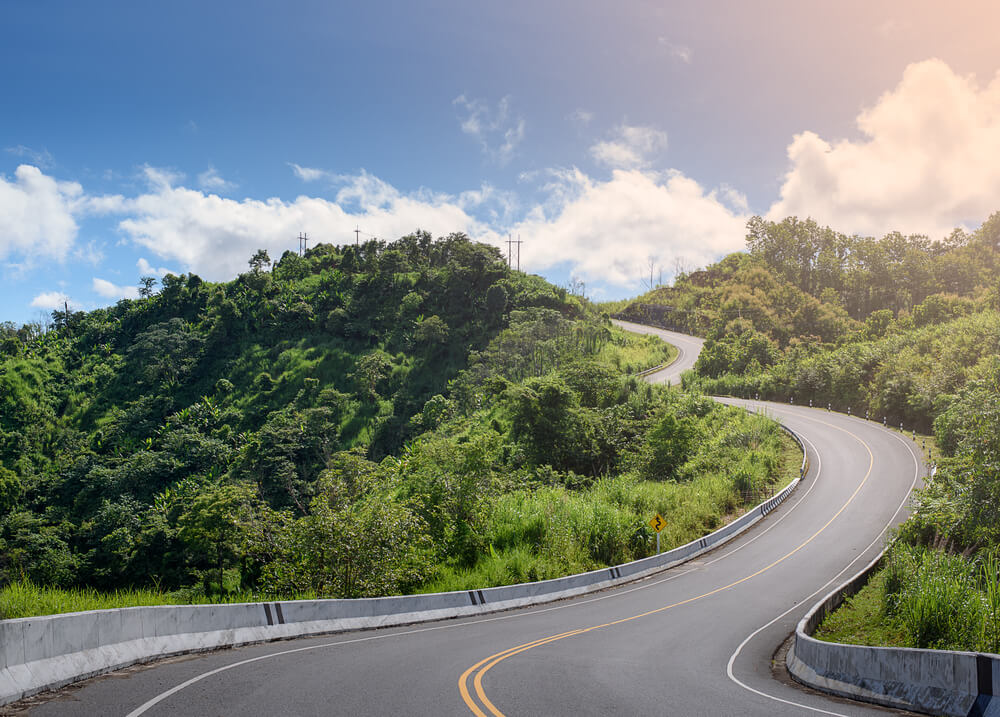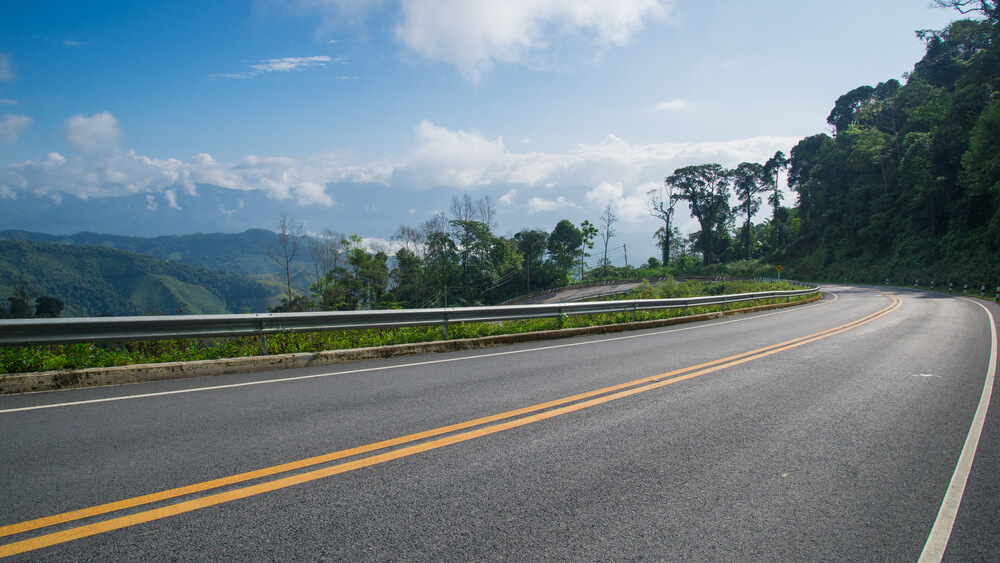Planning a road trip across Thailand can seem confusing. Many travelers are not sure about the rules, documents, or what the roads are really like for “Cross-Country Driving In Thailand.”.
In 2025, most major Thai highways connect cities faster than ever before. Yet traffic conditions and driving regulations often surprise foreign drivers.
This guide answers key questions about licenses, car rentals, safety rules, and navigation in simple steps. Read on to find out how to make your cross-country trip smooth and safe.
Driving Requirements for Foreigners in Thailand
Foreign drivers must follow certain rules to drive legally in Thailand. You need specific documents and must meet age limits before you can get behind the wheel.
What are the rules for using a driver’s license and International Driving Permit (IDP) in Thailand?
Tourists must carry a valid driver’s license from their home country and an International Driving Permit (IDP) under the 1949 Geneva Convention to drive in Thailand. The Thai police often check these documents at roadblocks, especially around popular travel spots.
The IDP works as a translation of your original license. Only Class B or equivalent licenses let you drive cars; motorbikes require motorcycle endorsement on both your local license and the IDP.
Licenses not in English need an IDP for legal driving. Expired licenses are never accepted, even with an IDP. For visits over 90 days or residency, apply for a Thai driver’s license at the Department of Land Transport.
What is the minimum age to drive and what documents do I need?
The minimum age to drive in Thailand is 18. You must have a valid driver’s license from your home country and an International Driving Permit (IDP). The IDP translates your license into Thai, making it easier for local authorities to understand.
Carry both documents at all times while driving.
A passport or other form of identification is also necessary. Always check for any changes in the regulations before you travel. Understanding these requirements helps ensure smooth cross-country driving in Thailand.
Next, let’s look at road conditions and infrastructure in 2025.
Road Conditions and Infrastructure in 2025
Thailand’s highway system will continue to expand in 2025. Expect well-maintained roads and clear signs that help with easy navigation.
How extensive are Thailand’s highway networks and toll roads?
Thailand has a large highway network. It includes many toll roads. The total length of highways is about 4,000 kilometers. These roads connect major cities and tourist spots.
Toll roads are common in Thailand. They help keep traffic flowing smoothly. Drivers pay fees at various points along the route. Road quality varies, but most main highways are well-maintained.
Effective navigation relies on road signs that guide drivers clearly to their destinations.
Next, let’s look at road signs and how to navigate effectively in Thailand.
What road signs should I expect and how can I navigate effectively?
Expect a mix of road signs in Thailand. Many signs use English and Thai, which helps tourists understand directions. Look for standard symbols like stop signs and speed limits. Familiarize yourself with the common shapes: round for warnings, rectangular for information, and triangular for caution.
GPS apps are handy for navigation. They provide real-time traffic updates and directions in English. Download offline maps as backup since internet access may vary in remote areas.
Having a reliable way to navigate makes cross-country travel easier. Safe driving practices will help you enjoy your journey more fully.
Safety Considerations for Driving in Thailand
Driving in Thailand has its own challenges. Speed limits are often posted, but you should remain cautious of speed cameras. Local drivers may not always follow rules, so be alert at intersections and during rush hour.
What are the speed limits and where are speed cameras located?
In Thailand, speed limits can vary. For urban areas, the limit is usually 60 km/h (37 mph). On highways, it typically rises to 90 km/h (56 mph) or more. Be aware of posted signs as they indicate specific limits for each road.
Speed cameras are common on major roads and in city centers. They help enforce traffic rules and catch speeding drivers. Look out for warning signs that show where speed cameras may be located.
Staying within the speed limits will ensure safer travels while driving in Thailand.
What driving etiquette should I follow and what common challenges might I face?
Driving in Thailand requires understanding the local etiquette. Drivers often use their horns to signal others, not necessarily out of anger. Be prepared for sudden stops and lane changes, especially in busy areas.
Use turn signals when changing lanes or making turns.
Traffic congestion is common during rush hour, mainly in big cities like Bangkok. Watch for motorbikes that may weave between cars; they are a significant part of road culture here.
Expect different driving styles from locals; patience is key to handling challenges on the road safely.

Renting a Vehicle for Cross-Country Driving
Renting a car is easy in Thailand. You will need a valid driver’s license and an International Driving Permit. Expect to pay different prices based on the type of vehicle you choose.
Insurance is also available for extra peace of mind during your trip.
What are the requirements and typical costs for renting a car?
Car rental companies in Thailand require you to meet specific conditions and costs. Below is a summary of the main requirements and expected prices for 2025.
| Requirement/Cost | Details |
| Minimum Age | 21 years old, some agencies require 23-25 for full insurance |
| Driver’s License | Valid national license and International Driving Permit (IDP) in English |
| Passport | Required for identification at pickup |
| Credit Card | Major companies require a credit card for deposit |
| Deposit | Typically 5,000 to 10,000 THB held on your card |
| Rental Cost (Economy) | 1,000 to 1,800 THB per day in 2025 |
| Rental Cost (SUV) | 2,000 to 3,500 THB per day |
| Insurance | Basic insurance included, CDW or full cover adds 250 to 400 THB per day |
| One-way Rental | Available between major cities, fees range from 1,200 to 3,000 THB |
| Extras | GPS, child seats, or Wi-Fi cost 100 to 250 THB per day each |
What insurance options and one-way rentals are available?
Travelers can find different insurance options and rental plans when driving across Thailand. One-way rentals are a convenient choice for many.
- Basic insurance is often included in vehicle rentals. This covers damage to the car but may have a high deductible.
- Collision Damage Waiver (CDW) reduces your financial responsibility if the car gets damaged. Expect to pay extra for this option.
- Theft Protection can be added to cover your loss if the car is stolen. This varies by rental company.
- Liability Insurance is usually required by law in Thailand. It covers injuries or damages to others that you cause while driving.
- One-way rentals allow you to pick up a car in one city and drop it off in another. Not all companies offer this, so check beforehand.
- Extra fees may apply for one-way rentals, depending on the distance between pickup and drop-off locations.
- Some companies offer unlimited mileage for long trips, which can save money during cross-country travel.
- Be aware of local driving rules before renting a vehicle, as they affect insurance coverage and personal safety.
Understanding these options helps ensure safe travels while exploring Thailand’s scenic routes and local culture.
Alternatives to Driving in Thailand
You can hire private drivers or join guided tours to explore Thailand. Public transport and ride-hailing apps also offer great options for getting around without a car.
How can I hire private drivers or join organized tours?
Hiring private drivers or joining organized tours is a good option for travel in Thailand. These services make it easy to explore without the hassle of driving.
- Use online platforms to find private drivers. Websites and apps often list trusted local drivers with good ratings.
- Check local travel agencies. They provide options for booking private cars or guided tours across Thailand.
- Look for hotel services that offer driver hiring. Many hotels can arrange trusted chauffeurs for their guests.
- Join organized tours offered by tourism companies. They often include transportation, guides, and planned itineraries.
- Read reviews before booking a service. Customer feedback helps you choose reliable and safe options.
- Confirm the vehicle type and amenities in advance. Ensure the car meets your comfort needs for a pleasant trip.
- Discuss fees upfront to avoid surprise costs later on. Ask about all charges, including fuel and tolls.
- Verify insurance coverage through the service provider before hiring a driver or joining a tour group.
- Know your travel route if going with a driver; this helps in effective navigation during your journey.
Using these tips will help ensure smooth travel while enjoying Thailand’s sights safely and conveniently without needing your own vehicle on cross-country trips in 2025.
What public transport and ride-hailing apps can I use instead?
Public transport and ride-hailing apps make getting around Thailand easy. They offer great options for those who prefer not to drive.
- Buses: Thailand has a large bus network. Cities and towns are connected, making it convenient to travel across the country. Buses are often cheap and run frequently.
- Trains: The train system links major cities like Bangkok, Chiang Mai, and Surat Thani. It can be more comfortable than buses on longer trips. Train tickets range in price, based on class and distance.
- Tuk-tuks: These three-wheeled vehicles are popular in urban areas. Tuk-tuks provide a fun way to get around short distances. Rates should be negotiated before starting your ride.
- Songthaews: These shared taxis operate on fixed routes in cities and rural areas. They are affordable and can fit several passengers at a time.
- Grab: This ride-hailing app is widely used in Thailand. Grab offers car rides, bike rides, and food delivery services all through one platform.
- Bolt: Another ride-hailing option available in select areas of Thailand is Bolt. Users can book rides quickly through their user-friendly app, often at competitive rates.
- Public Ferries: In coastal cities like Bangkok, ferries provide access across rivers or lakes. They can be an enjoyable way to see the city while traveling.
- Motorbike Taxis: For quick trips in busy areas, motorbike taxis are ideal. Drivers wear vests for easy identification; just hop on behind them for a fast ride.
Exploring these options helps travelers enjoy the local culture without worrying about driving regulations or traffic conditions in Thailand.
Cross-Country Driving In Thailand in 2025
Driving across Thailand in 2025 will be an adventure. Expect vibrant culture and stunning scenery along the way. Familiarize yourself with local traffic rules and road conditions to stay safe.
Renting a car is easy, but other options like private drivers are available too. Enjoy your trip and make unforgettable memories on the roads of Thailand!
SPS Car Hire Thailand is the perfect place to rent vehicles for your journey. Please click on the button below to rent cars from us.


